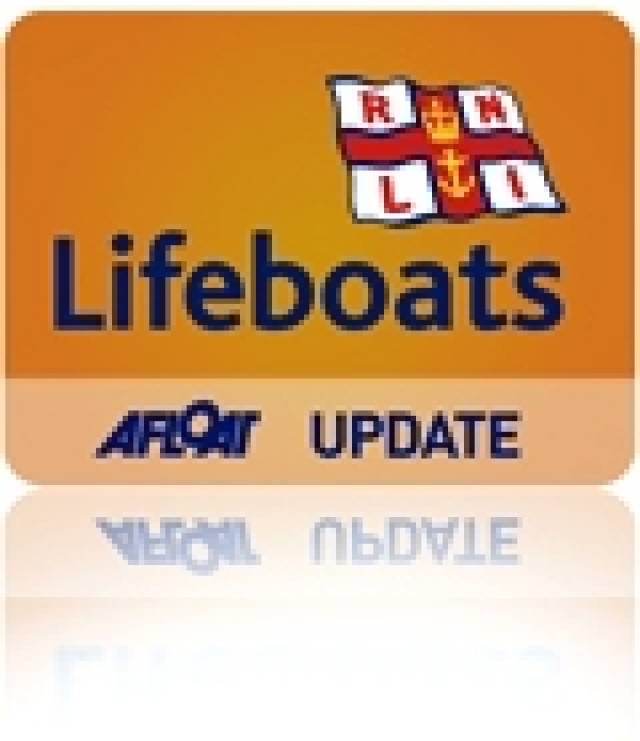#RNLI - Clifden RNLI carried out its first medical evacuation off Inishbofin island today (Thursday 21 May).
In what was the fourth callout this week for the station, the volunteer lifeboat crew was paged shortly after 11.30am following a report that a casualty required assistance.
The inshore Atlantic 85 lifeboat helmed by Bernard Whelan and the all-weather Mersey class lifeboat under coxswain John Mullan launched immediately and made their way to the scene. The Irish Coast Guard helicopter Rescue 115 from Shannon was also tasked.
Weather conditions at the time were foggy and visibility was poor. There was a Force 4-5 south westerly wind and a heavy swell.
The Atlantic 85 with crew members James Mullan, Daniel Whelan and Dermot Clancy onboard arrived on scene first. Mullan, a first aider with Clifden RNLI, went ashore and assisted the island nurse who was attending to the casualty.
When the all-weather lifeboat arrived at 1pm, the casualty was transferred to this lifeboat and brought to the mainland at Cleggan Pier where there was an ambulance waiting.
Speaking following the callout, Mullan said: "We have assisted with many medical evacuations in the past but today was the first time that our crew transported someone from Inishbofin island and brought them safely to the mainland.
"Both lifeboat crews worked well together today and we were happy to assist the island nurse in bringing this person to safety."
This was the fourth callout for Clifden RNLI this week. The crew assisted with two other medical evacuations and also went to the assistance of a yacht which got into difficulty on the shore.
































































